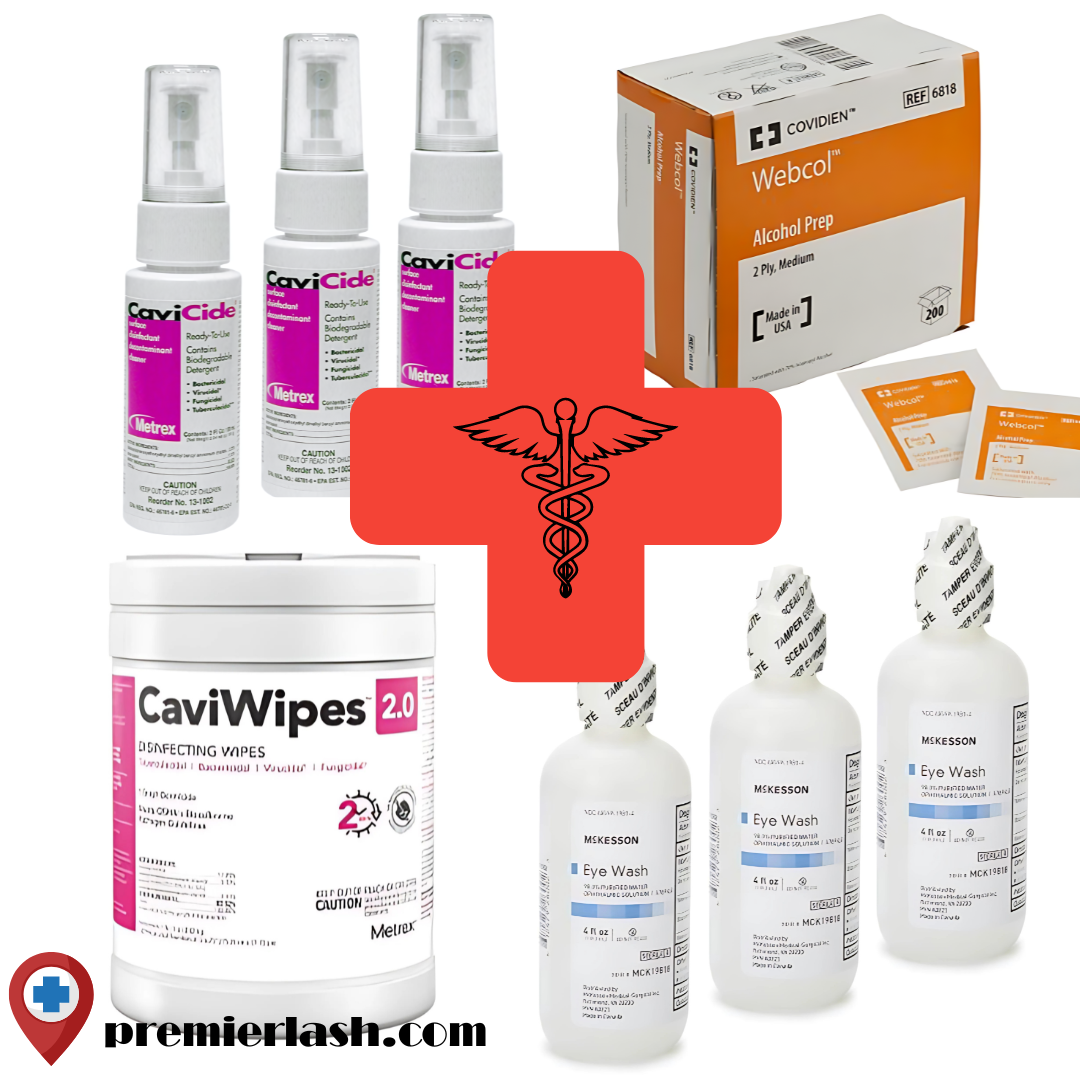Best Practices For Sterilization and Disinfection
Sep 17th 2024
In a lash salon, following best practices for sterilization and disinfection is essential for ensuring client safety and complying with state health regulations. Here are the key guidelines typically recommended by most state boards of cosmetology, though it's always important to check specific state regulations:
1. Clean and Disinfect Tools After Every Use
- Tweezers and Scissors: All tools that come into direct contact with the client's eyes or skin must be thoroughly cleaned with soap and water, then disinfected using an EPA-registered hospital-grade disinfectant. This ensures removal of any bacteria, viruses, or fungal spores.
- Ultrasonic Sterilizer or Autoclave: For metal tools, using an ultrasonic cleaner or autoclave is considered a best practice. These methods ensure complete sterilization by killing all microorganisms, including bacterial spores.
2. Disinfection of Workstations
- Surfaces: All workstations, including beds, chairs, and countertops, should be wiped down and disinfected with an EPA-approved disinfectant after each client. Disinfecting wipes or sprays that specifically state they kill bacteria, viruses, and fungi should be used.
- Lash Pillows and Bedding: Use disposable covers or ensure that reusable items like lash pillows and bedding are laundered between clients. Replace disposable items after each use.
3. Hand Hygiene
- Washing Hands: Lash stylists should wash their hands with soap and water for at least 20 seconds before and after each client. Hand sanitizers (at least 60% alcohol) can be used as a secondary measure but should not replace proper handwashing.
- Gloves: Wear disposable gloves during each lash application. Change gloves between clients and avoid touching anything that isn't sanitized while wearing them.
4. Disposable Products
- Single-Use Tools: Items like mascara wands, glue rings, and micro-brushes should always be disposable. They must be discarded after a single use to prevent cross-contamination.
- Lash Adhesive Palettes: Use a new adhesive palette for each client, and properly clean and disinfect reusable palettes.
5. Ventilation and Air Quality
- Ensure proper ventilation in the salon to reduce airborne contaminants and adhesive fumes. Some states recommend having a fume extractor or ensuring windows are open to allow airflow.
6. Lash Adhesive Safety
- Seal and Store Properly: Adhesives should be stored in a cool, dry place with the cap tightly sealed. Expired or improperly stored adhesives can harbor bacteria, so check expiration dates and discard any compromised products.
- Patch Test: Conduct patch tests on new clients to prevent allergic reactions and ensure product compatibility.
7. Record-Keeping
- Many state boards recommend keeping a log of cleaning and disinfection activities to track compliance with sanitation protocols. This can also be useful during inspections.
8. Personal Protective Equipment (PPE)
- Masks: Lash stylists are encouraged to wear masks, especially during close contact services, to reduce the risk of transmitting airborne pathogens to clients.
9. Disinfection Frequency
- Between Clients: Sanitize all reusable tools and disinfect surfaces between every client.
- Daily and Weekly Cleanings: At the end of each day, perform a deep cleaning of all surfaces and equipment. Weekly, sanitize larger tools and areas like treatment beds and UV lamps.
10. Emergency Eye Wash Station
- Lash salons should also have an emergency eye wash solution available in case of accidental product splashes in the eye. This solution should be sterile and used immediately when needed.
By adhering to these practices, lash salons can ensure they comply with state health and safety guidelines while protecting their clients from infections and allergic reactions. Always check your specific state's requirements to stay up to date with the latest standards.

